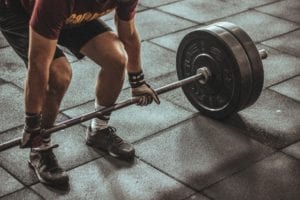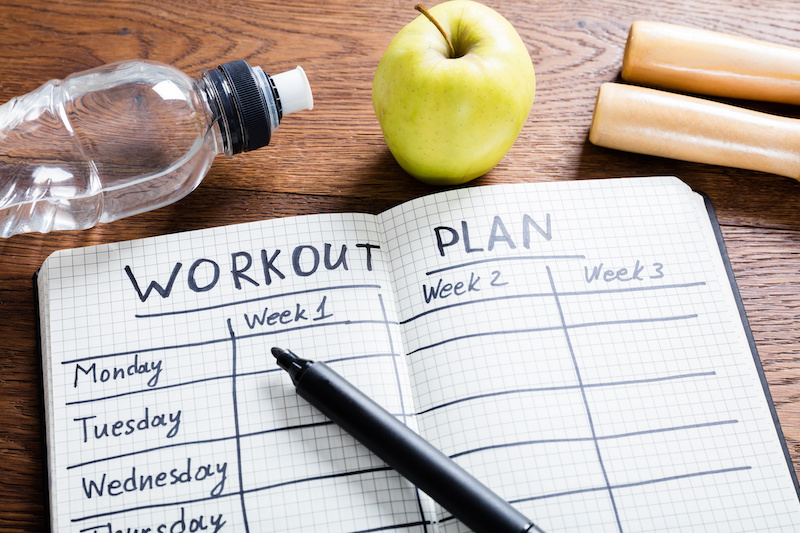By Alex Janis, CPT at Prescription Fitness (CLE, Ohio)
The deadlift is powerful exercise and when performed properly can make or break strength gains within the gym. Perhaps it may seem excessively simple: Pick up the weight and put it back down. This is a very primal movement pattern and is still utilized in daily activity with high degrees of frequency i.e. picking up groceries. So not only can the deadlift carry over to workout strength but it also plays a role in how well you feel and function during activities of daily living. What are the best ways to deadlift and how can you increase your strength in the deadlift without necessarily having to risk injury under maximal loads? Here are some options:
- Perform hip hinges regularly without weight. A hip hinge is resultant of pushing the glutes back behind you, flexing at the hip, and shifting weight onto the heels. Once you can master this hip hinge, add a weight across the chest and then onto the back to perform a Good Morning exercise.
- Perform two legged and single leg Romanian Deadlifts (RDLs). These should be done first with dumbbells then progressed to barbells. The first motion of this exercise is a hip hinge as described above, but the next phase of the movement is to have the arms fully extended so that the aim is to “touch your toes.” Depending on flexibility you may only be able to reach just below your knees or your shins but this is ok!
- Perform trap bar deadlifts (also known as hex bar deadlift). A trap bar deadlift is easier than a standard barbell deadlift since there is little shift in the center of gravity being placed on the body and hand position is usually more comfortable. This is because the lifter will stand inside an enclosed bar rather than stand behind a straight bar. Depending on how comfortable you are with this set up, you may elevate the bar by placing it on boxes (to make it easier) or you may stand on a short box to increase range of motion (makes it harder).
- Perform slow reps on a back hyperextension machine or one of it’s many variants. The key of this exercise is to maintain a neutral back through the motion and to pause and squeeze the glutes and back at the top of the exercise. Because of the biomechanics and force placements of this exercise, it can be performed effectively with little to no weight, and often provides a therapeutic “stretching” of the back in the down position. This is a great choice for people with shoulder and back impingements.
- When deadlifting, or performing any of these exercises, sometimes less is more. If you do not feel comfortable or safe performing very heavy loads, dial back on the weight on perform controlled eccentrics (the negative component of the movement). For example, while doing trap bar deadlifts do not drop the weight back down on the ground. Rather, try lowering it for three seconds during each repetition. This will increase strength without needing to go as heavy thanks to increased time under tension.

Click on a Subject to Learn More



